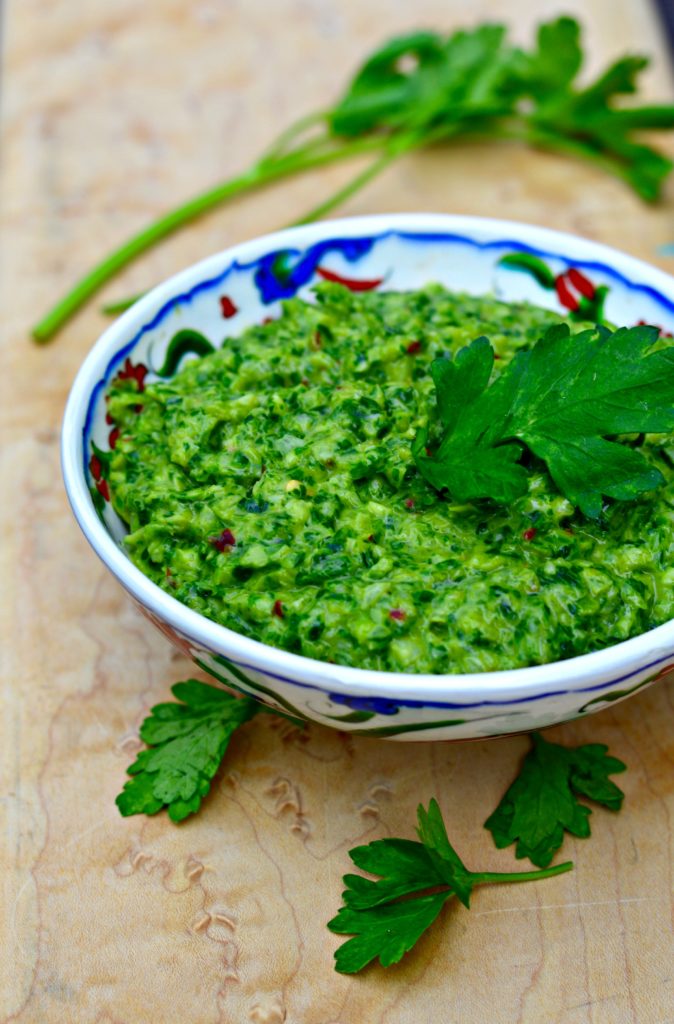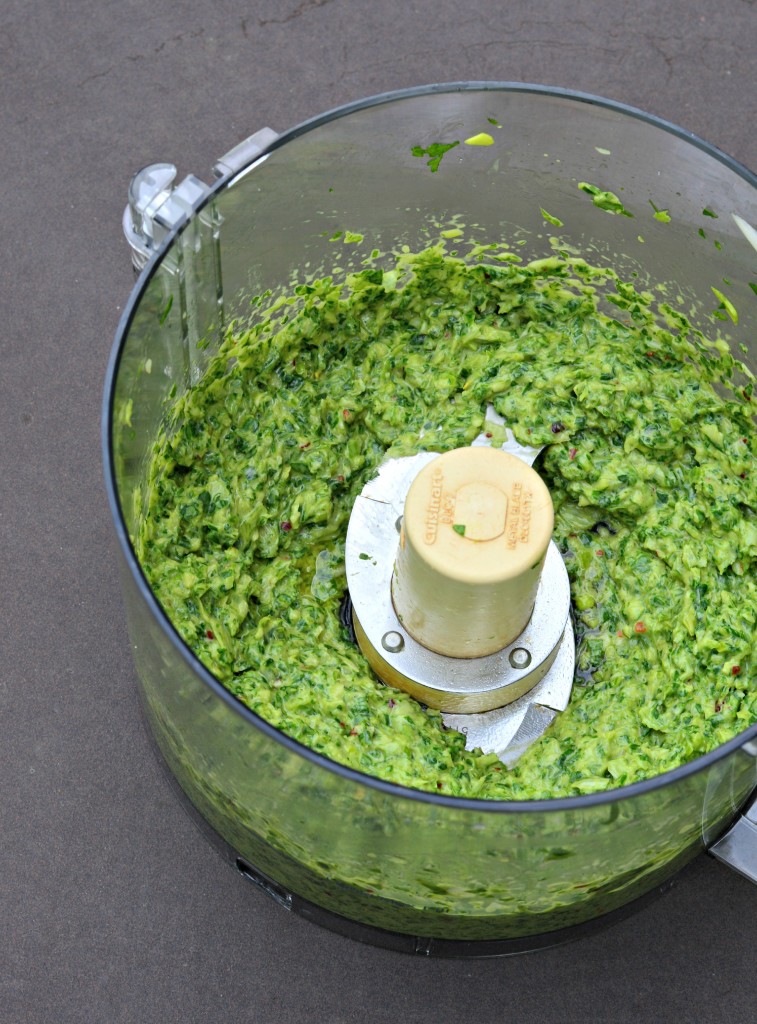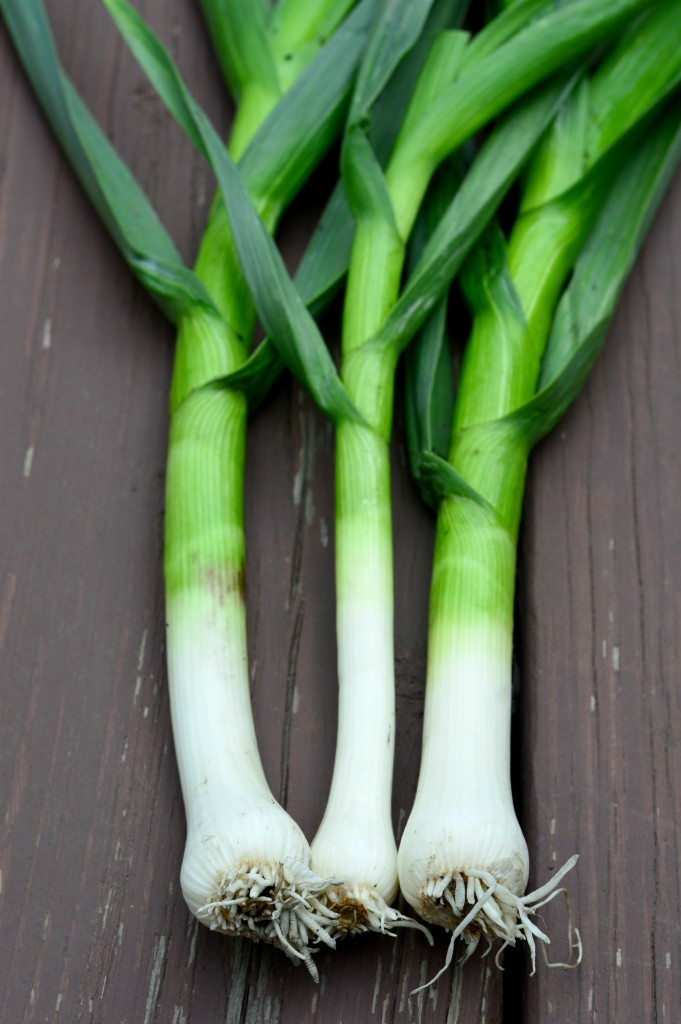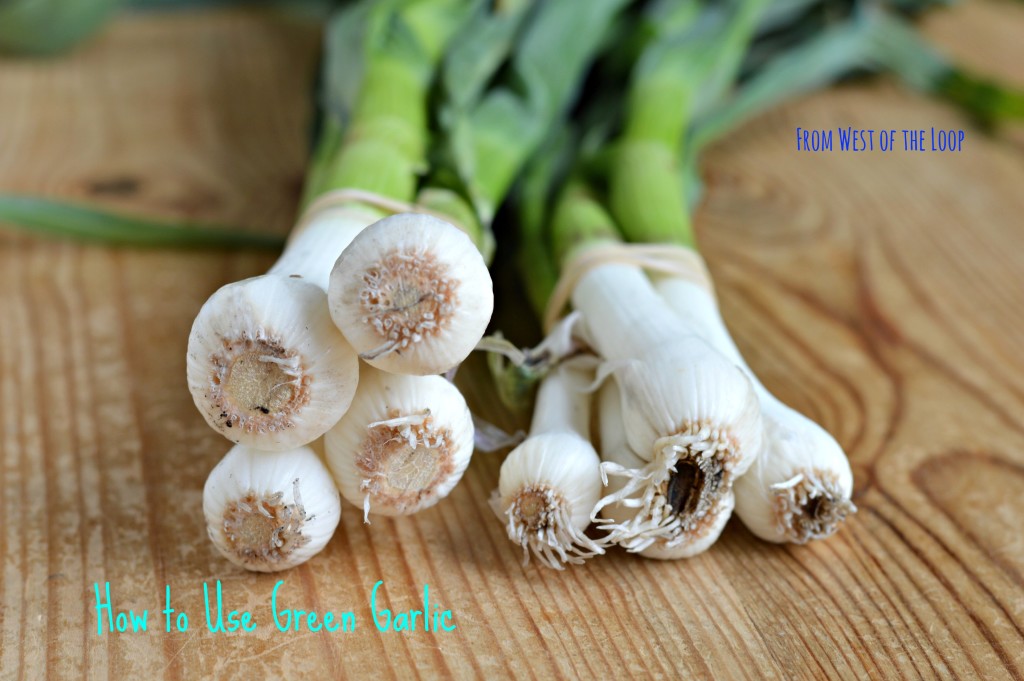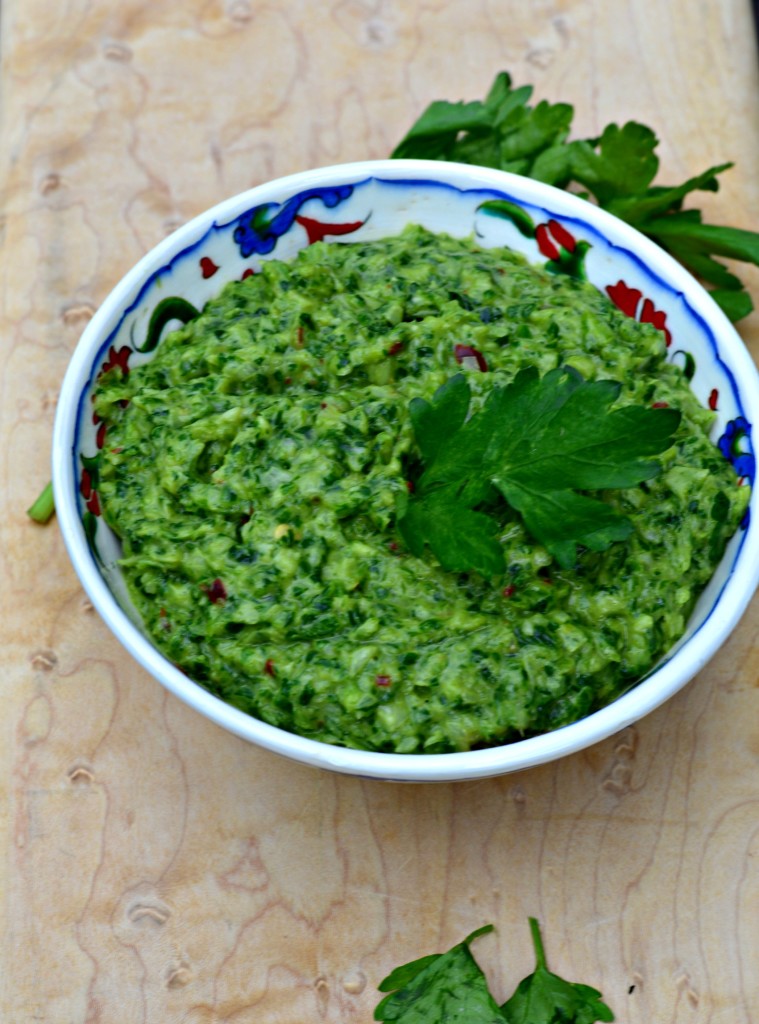I almost hesitate to call this sauce chimichurri because it deviates in a few key ways from the traditional Argentinian recipe. You know how the food police can be! But then again, any condiment with this much parsley and garlic and that goes as well as this one does with grilled meat deserves to be called a chimichurri.
Chimichurri is simply a South American sauce for grilled meat that is usually made of finely chopped parsley and garlic, vinegar and olive oil. No one is quite sure of the origin of the unusual name.
I first tried chimichurri as a kid when a Nicaraguan restaurant opened in the DC suburbs. I adored that restaurant, whose name I have forgotten, with its expertly grilled meat, piquant chimichurri and two kinds of plantains served with every dish. But it must have been ahead of its time because it did not last long. My aunt who used to take me to this restaurant will smile when she reads this, I have no doubt. Perhaps she even recalls the name.
Fortunately, chimichurri is far easier to prepare at home than fried plantains. With summer grilling season upon us, now is the time to perfect your version of this classic South American condiment.
When I spied green garlic at the Oak Park Farmers Market opening day last Saturday, I could not pass it up. Green garlic is simply a young form of garlic. Left in the ground, the bulb would grow and divide into cloves like the garlic we know. Farmers used to pick green garlic merely to thin their crops — and probably tossed the harvested garlic to the pigs — but now it is a much-desired crop in its own right for its mild garlic flavor and versatility. Green garlic looks a lot like scallions or spring onions, so I hope your farmer labels everything clearly. If not, try a sniff test.
Green garlic is filthy dirty so wash it well, like you would leeks, unless you enjoy ingesting dirt to boost your immune system. Cut off any thick, woody stems and the roots, but you can use the bulb and the thinner stalks. Green garlic will work in any recipe calling for regular garlic, keeping in mind that it is milder, but why not showcase this seasonal crop? You can make it into a pesto with some herbs, combine it with some spring greens, or simply sauté it and sprinkle it over fried eggs.
After much internal debate, I decided to use this week’s green garlic — for I am sure I will buy more before the season ends — in a verdant chimichurri to accompany our Memorial Day weekend grilled flank steak. I don’t think the use of green garlic is what calls the validity of my chimichurri into question. Rather, it is the heretical substitution of lemon juice for vinegar. I just prefer the bright taste of lemon juice and I like how it fixes the green color of the sauce. But messing with another culture’s signature dish is a dangerous business. Here is hoping I don’t get into too much trouble.
- 6 stalks green garlic washed, trimmed and roughly chopped
- 2 cups lightly packed flat-leaf parsley
- ¼ cup freshly squeezed lemon juice or white vinegar
- 6 TB extra virgin olive oil
- 1 tsp salt
- 1 tsp red pepper flakes
- Combine the green garlic, parsley, and lemon juice in the bowl of a food processor. Pulse a few times to combine.
- With the motor running, slowly pour in the olive oil until the mixture forms a paste.
- Season with salt and red pepper flakes. Taste and adjust seasoning if necessary.
- Best if prepared ahead of time to allow flavors to develop. Refrigerate until ready to use.
- Serve with grilled meat.
